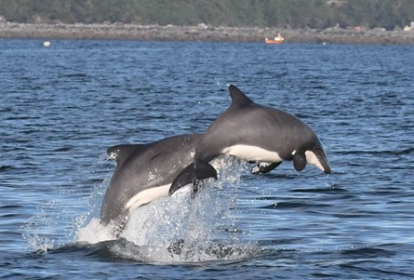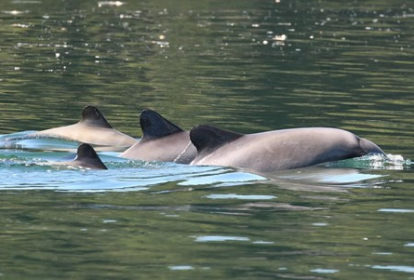Principal Investigator: Sonja Heinrich/YaquPacha Chile (CECEM)
Funding year: 2016
Main objectives:
- Estimate population size of Chilean Dolphins in key areas of know and predicted occurrence in the Ecoregion Chiloense;
- To assess the types and intensity of potential threats to Chilean dolphins in these key areas;
- To collect minimally invasive skin biopsy samples from Chilean dolphins and all key sites for studies of population connectivity, genetic population structure and health assessments;
- To build capacity in survey techniques relevant to monitoring the population status of Chilean dolphins;
- To enhance awareness among the general public and stakeholders of Chile’s only endemic cetacean species and its conservation status.
Main outcomes:
- A combination of predictive habitat modelling, literature review and pilot field visits informed the selection of focal areas where intensive snap-shot photo-identification and mark-recapture surveys were conducted over a two year period. All populations were found to be small with local estimates ranging from 42 (25-71, 95%C) to 98 (82-1119, 95% CI) Chilean dolphins. The combined estimate for the five surveyed areas is for 290 dolphins (243-346, 95% CI).These first estimates of population sizes show a spatially consistent pattern of small, localised populations being typical for Chilean dolphins. The visit to the remote southern- most study area (Laguna San Rafael) was facilitated by additional IWC funding for the charter of a larger survey vessel. This also allowed the trialling of standard distance sampling techniques with this species. These trials confirmed that the targeted focal area mark-recapture surveys yield more robust and cost-effective results and permit the collection of additional information such as minimally invasive skin biopsy samples for genetic studies and health assessments.
- The exposure of Chilean dolphins to anthropogenic activities varied spatially, but overall levels of direct threats appeared to be relatively low. However, given the very small local populations (< 100 dolphins) even low levels of direct mortality might have serious population-level effects. Mortality of Chilean dolphins in coastal gillnets and salmon farm cage netting has been reported. Chilean dolphins were exposed to low levels of vessel traffic in all areas. Most vessels simply passed the dolphins at some distance. No sustained interactions between dolphins and vessels were observed. The most commonly observed vessels were motorised boats of < 10 m length powered by outboard engines and used to support aquaculture activities, shellfish extraction or local transport. Most vessels moved slowly (<10 knots). A small number of vessels involved in transfer of personnel from salmon farms (all areas) or related to tourism activities (LSR) moved at greater speeds (up to 20 knots).
- During field work, local stakeholders and communities were consulted and information material was distributed and now prominently displayed by the local port authorities (Chilean Navy) where all local vessel operators have to obtain their bi-weekly navigation permits. In addition, Chilean team members have an ongoing commitment supporting and organising a range of outreach activities, mostly in the metropolitan region, to help raise awareness of Chile’s only endemic cetacean species. Activities include workshops with fishers and salmon farm operatives in Puerto Montt, the Chiloé Archipleago and Aysén Region, where Information gathered during this project was shared. Reports for WWF Chile summarising some of the results from this project in relation to the dolphin health-related work and outreach activities have also been produced.
Reports/Papers:
Full report to follow.
Additional Material:
Click here to watch a short film about this research programme.





